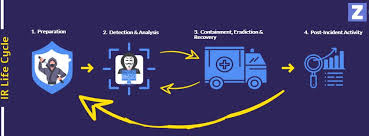Post Cyber Incident Recovery, In an increasingly digital world, the frequency and severity of cyber incidents are on the rise. Organizations face a daunting challenge to safeguard their data, assets, and reputations. However, even the most robust cybersecurity measures can be breached. This reality underscores the importance of having a comprehensive post-cyber incident recovery plan in place. In this article, we will explore the critical steps involved in post-cyber incident recovery and how organizations can enhance their resilience against future threats.
Understanding Post Cyber Incident Recovery
Post cyber incident recovery refers to the processes and strategies an organization implements after experiencing a cyber attack or data breach. The goal is to restore normal operations, mitigate damages, and enhance security measures to prevent future incidents. A well-defined recovery plan is essential for minimizing the impact of an attack and ensuring business continuity.
Key Steps in Post Cyber Incident Recovery
1. Assessment and Containment
The first step in post-cyber incident recovery is to assess the situation and contain the threat. This involves identifying the nature and scope of the breach, understanding what data or systems have been compromised, and implementing measures to prevent further damage. Organizations should mobilize their incident response teams to initiate containment protocols immediately.
2. Communication and Transparency
Effective communication is vital during a cyber incident. Organizations must inform stakeholders, including employees, customers, and partners, about the breach and the steps being taken to address it. Transparency fosters trust and reassures stakeholders that the organization is taking the necessary steps to mitigate risks.
3. Investigation and Analysis
After containment, a thorough investigation is necessary to understand how the breach occurred. This analysis should include reviewing logs, conducting forensic examinations, and identifying vulnerabilities that were exploited. The findings will inform future security measures and help organizations learn from the incident.
4. Restoration of Services
Once the investigation is complete, organizations must focus on restoring affected services and systems. This may involve repairing or replacing compromised hardware, restoring data from backups, and ensuring that all security measures are in place before bringing systems back online. It is crucial to verify that the systems are secure and functioning correctly.
5. Review and Update Policies
A cyber incident presents an opportunity for organizations to review and update their cybersecurity policies and procedures. This includes evaluating incident response plans, employee training programs, and security protocols. By addressing any identified weaknesses, organizations can strengthen their defenses against future attacks.
6. Continuous Monitoring and Improvement
Post-recovery, organizations should implement continuous monitoring to detect any unusual activity. This proactive approach can help identify potential threats early and allow for quick response. Additionally, regular training and simulation exercises can keep employees aware of cybersecurity best practices and reinforce a culture of security within the organization.
Conclusion
Post cyber incident recovery is a critical aspect of cybersecurity that organizations must prioritize. By following a structured recovery process that includes assessment, communication, investigation, restoration, policy updates, and continuous monitoring, organizations can not only recover from a cyber incident but also emerge stronger and more resilient. In an era where cyber threats are inevitable, preparedness and a commitment to learning from incidents will ultimately define an organization’s ability to thrive in the digital landscape.
Embracing these principles will equip organizations to face future challenges with confidence and fortify their defenses against the evolving cyber threat landscape.
You Might Also Like These:
Prepared for a Cyber Attack vs. Incident Recovery: A Strategic Approach to Cybersecurity
Mimecast: 30 Days of Data Recovery for Cyber Resilience
Recovery Timeline After a Cyber Incident: A Comprehensive Guide
Pre-Disaster Recovery Plan for Cyber Attacks: A Vital Component of Cyber Resilience
Cyber Fault-Tolerant Attack Recovery: Enhancing Resilience in Digital Security

